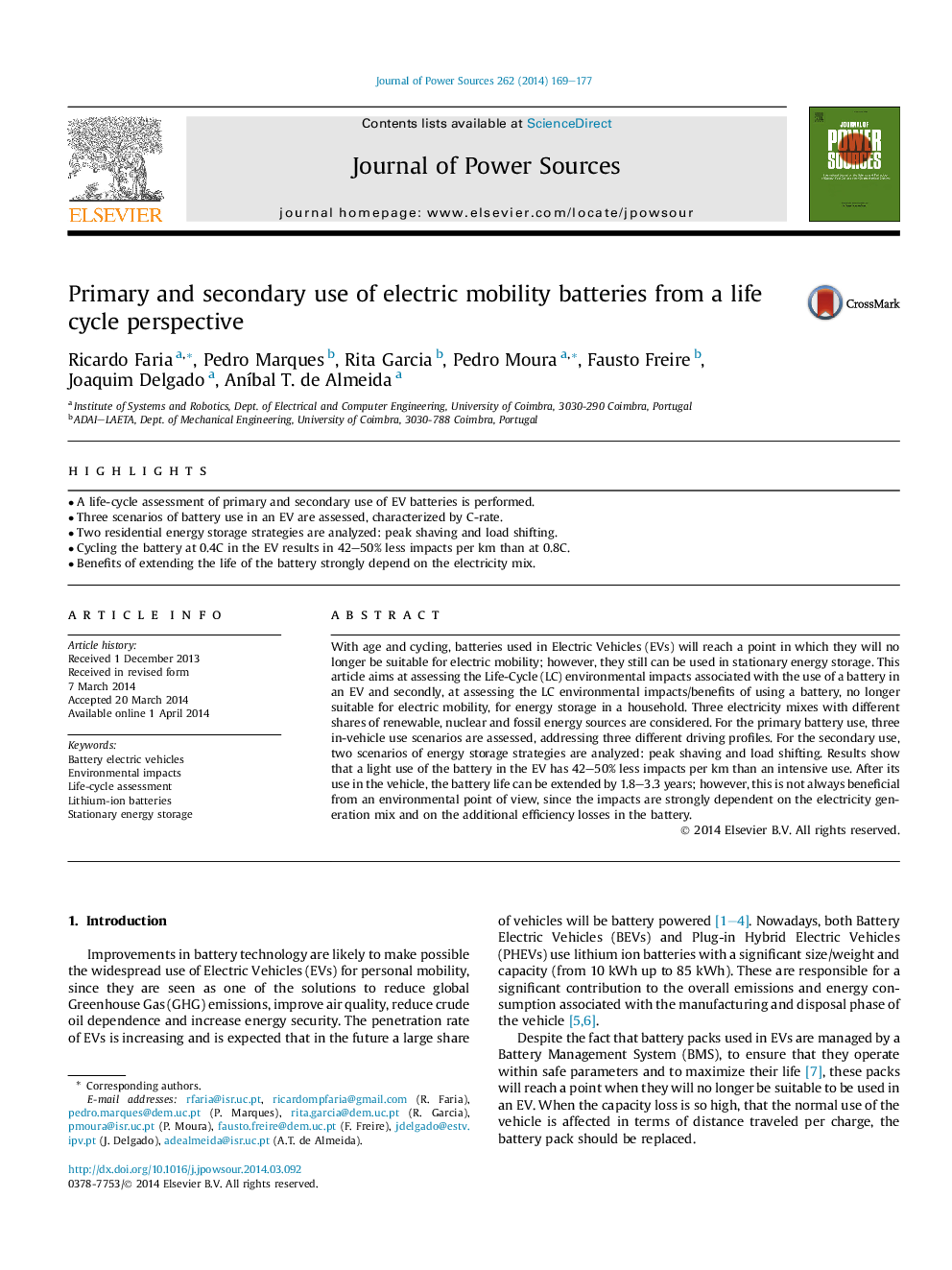| Article ID | Journal | Published Year | Pages | File Type |
|---|---|---|---|---|
| 7736877 | Journal of Power Sources | 2014 | 9 Pages |
Abstract
With age and cycling, batteries used in Electric Vehicles (EVs) will reach a point in which they will no longer be suitable for electric mobility; however, they still can be used in stationary energy storage. This article aims at assessing the Life-Cycle (LC) environmental impacts associated with the use of a battery in an EV and secondly, at assessing the LC environmental impacts/benefits of using a battery, no longer suitable for electric mobility, for energy storage in a household. Three electricity mixes with different shares of renewable, nuclear and fossil energy sources are considered. For the primary battery use, three in-vehicle use scenarios are assessed, addressing three different driving profiles. For the secondary use, two scenarios of energy storage strategies are analyzed: peak shaving and load shifting. Results show that a light use of the battery in the EV has 42-50% less impacts per km than an intensive use. After its use in the vehicle, the battery life can be extended by 1.8-3.3 years; however, this is not always beneficial from an environmental point of view, since the impacts are strongly dependent on the electricity generation mix and on the additional efficiency losses in the battery.
Keywords
Related Topics
Physical Sciences and Engineering
Chemistry
Electrochemistry
Authors
Ricardo Faria, Pedro Marques, Rita Garcia, Pedro Moura, Fausto Freire, Joaquim Delgado, AnÃbal T. de Almeida,
